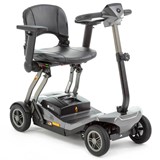Ultrasound machines play a crucial role in medical diagnosis by providing non-invasive imaging capabilities. Whether you are setting up a new medical practice or upgrading your existing equipment, choosing the right ultrasound machine is a decision that requires careful consideration. In this guide, we will walk you through the important factors to consider, the different types of ultrasound machines available, their applications in various medical specialties, and how to evaluate and select the most suitable machine for your needs.
Ultrasound machines have become indispensable tools in modern healthcare due to their versatility, safety, and real-time imaging capabilities. They provide valuable insights that aid in the detection and diagnosis of medical conditions, guiding treatment decisions and enhancing patient care.
Factors to Consider Before Purchasing an Ultrasound Machine
- Clinical requirements and specialization: Different medical specialties may have specific ultrasound imaging needs. Consider the clinical applications relevant to your practice and choose a machine that aligns with your requirements.
- Budget and cost considerations: Determine your budget range for purchasing an ultrasound machine, considering not only the initial cost but also any potential additional expenses such as probes, accessories, and ongoing maintenance.
- Image quality and resolution: Opt for a machine that offers high-resolution imaging capabilities. Image quality is crucial for accurate diagnoses and detailed visualization of anatomical structures.
- Portability and mobility: Assess your practice's needs regarding portability. Portable ultrasound machines offer flexibility and ease of use, allowing healthcare professionals to perform imaging studies at the patient's bedside or in remote locations. Console ultrasound machines, on the other hand, provide advanced features and larger displays but are less portable.
- Probe options and versatility: Consider the availability of different probe options for the ultrasound machine. The probes should be suitable for the specific imaging needs of your practice, such as abdominal, cardiac, or transvaginal examinations. Ensure that the machine allows for easy probe interchangeability and compatibility.
- Connectivity and integration: Check if the ultrasound machine has connectivity options to facilitate seamless integration with your existing medical record systems. This enables efficient storage, retrieval, and sharing of patient data and images.
- User interface and ease of use: A user-friendly interface and intuitive controls are essential for efficient workflow and ease of operation. Look for a machine with a clear and responsive display, logical menu navigation, and customizable settings to suit your preferences.
- Service and support: Consider the availability of service and support options from the manufacturer or vendor. Ensure that they offer timely technical assistance, training, and regular software updates to keep your ultrasound machine up to date and functioning optimally.
How to Choose the Right Ultrasound Machine for Your Practice or Clinic
Choosing the right ultrasound machine for your medical practice or clinic is a crucial decision that can impact patient care and diagnostic capabilities. With numerous options available in the market, it's essential to consider several factors before making a purchase. This guide will provide you with valuable insights and tips to help you make an informed decision.
1. Assess Your Clinical Needs
Begin by assessing your clinical requirements. Determine the medical specialties or applications for which you will primarily use the ultrasound machine. Different specialties may require specific features or imaging capabilities. For example, obstetrics and gynecology may require advanced obstetric imaging features, while cardiology may require excellent cardiac imaging capabilities.
Consider the types of examinations you will perform, such as abdominal, cardiac, vascular, or musculoskeletal. Each examination may have unique imaging requirements, and selecting a machine that caters to these needs is crucial.
2. Consider Your Budget
Establishing a budget is essential before exploring ultrasound machine options. Prices can vary significantly depending on the brand, model, features, and accessories. Determine the maximum amount you are willing to invest and ensure it aligns with your practice's financial capabilities.
While it's important to find a cost-effective solution, prioritize quality and performance over the price. Consider the long-term benefits and return on investment that a reliable and efficient ultrasound machine can provide.
3. Determine the Imaging Capabilities
The imaging capabilities of an ultrasound machine play a vital role in accurate diagnoses. Look for machines that offer high-resolution imaging, excellent image quality, and sufficient depth penetration. The machine should provide clear visualization of anatomical structures relevant to your medical specialty.
Consider additional imaging modes beyond the standard two-dimensional (2D) imaging. Three-dimensional (3D) and four-dimensional (4D) imaging modes offer enhanced depth perception and real-time imaging capabilities, enabling better visualization of structures and improving diagnostic accuracy.
4. Evaluate Transducer Options
Transducers are essential components of ultrasound machines that emit and receive sound waves. Different transducers are designed for specific imaging applications and body regions. Ensure that the machine offers a variety of transducer options suitable for your clinical needs.
Consider the frequency range of the transducers as it determines the resolution and penetration depth. Higher frequencies provide better resolution but may have limited depth penetration. Lower frequencies offer greater penetration depth but may sacrifice image resolution.
5. Assess Workflow and Ease of Use
Efficient workflow and ease of use are crucial factors to consider. Look for a user-friendly interface with an intuitive control panel and menu navigation. The machine should have clear and responsive displays, allowing for easy interpretation of images during examinations.
The customizability of settings is important to adapt the machine to individual preferences and streamline the workflow. Ensure that the machine offers features like preset configurations, customizable measurement packages, and programmable buttons for quick access to commonly used functions.
6. Consider Portability and Mobility
Evaluate your practice's needs regarding portability. Portable ultrasound machines offer flexibility and ease of use, allowing healthcare professionals to perform imaging studies at the patient's bedside or in remote locations. They are ideal for mobile healthcare providers, emergency medicine, and point-of-care applications.
On the other hand, console ultrasound machines provide advanced features, larger displays, and ergonomic design but are less portable. They are typically found in hospitals, imaging centers, and specialized medical practices.
7. Connectivity and Integration
Check if the ultrasound machine has connectivity options to facilitate seamless integration with your existing medical record systems. This enables efficient storage, retrieval, and sharing of patient data and images. Consider compatibility with picture archiving and communication systems (PACS) and electronic health record (EHR) systems.
8. Research Reliable Manufacturers and Models
Research reputable ultrasound machine manufacturers known for their quality and reliability. Look for manufacturers with a strong track record in the industry and positive customer reviews. Explore their product offerings and consider models that align with your clinical needs and budget.
Consult with colleagues, healthcare professionals, or industry experts who have experience with different ultrasound machine brands and models. Their insights and recommendations can provide valuable information and help you make an informed decision.
9. Consider After-Sales Support and Service
Before finalizing your purchase, inquire about after-sales support and service. Find out if the manufacturer offers warranty coverage, service agreements, and technical support. Consider factors such as response times, repair options, and the availability of spare parts.
Look for manufacturers or vendors that provide comprehensive training programs to ensure your staff can operate the machine effectively and make the most of its features. Adequate training and support can contribute to a smoother implementation process and maximize the benefits of the ultrasound machine.
10. Request Product Demonstrations and Trials
Whenever possible, request product demonstrations or trials of the ultrasound machines you are considering. This allows you to get hands-on experience with the equipment, evaluate its imaging quality, user interface, and workflow. Pay attention to ergonomics, ease of use, and how the machine integrates into your practice's workflow.
Consider involving your medical team during the demonstration or trial process to gather multiple perspectives and ensure that the machine meets the needs of different users and specialties within your practice.
11. Seek Financing Options
Ultrasound machines can represent a significant investment for your practice. Explore financing options available to you, such as leasing or financing plans offered by manufacturers or third-party vendors. These options allow you to spread out the cost over a specific period, easing the financial burden.
Carefully review the terms, interest rates, and repayment options of any financing agreements to ensure they align with your financial goals and capabilities.
12. Plan for Long-Term Scalability
Consider the future growth and scalability of your practice when choosing an ultrasound machine. Ensure that the machine has the flexibility to adapt to changing needs and advancements in technology. Evaluate the availability of upgrades, software enhancements, and compatibility with future accessories or transducers.
Choosing a machine that can grow with your practice reduces the need for frequent equipment replacement and minimizes disruptions to patient care.
Different Types of Ultrasound Machines
Ultrasound technology has advanced significantly, resulting in a wide range of ultrasound machines designed for various medical specialties and applications. Understanding the different types of ultrasound machines available can help you select the one that best suits your clinical needs. In this guide, we will explore some common types of ultrasound machines.
1. Portable Ultrasound Machines
Portable ultrasound machines are compact, lightweight, and designed for point-of-care use. They are highly mobile and can be easily transported to different locations within a medical facility or even in the field. Portable ultrasound machines are commonly used in emergency medicine, critical care, obstetrics and gynecology, and other specialties that require immediate imaging at the patient's bedside.
2. Console Ultrasound Machines
Console ultrasound machines are larger and more feature-rich compared to portable ones. They are typically found in hospitals, imaging centers, and specialized medical practices where advanced imaging capabilities and larger displays are necessary. Console ultrasound machines offer a wider range of imaging modes, higher processing power, and more advanced features for detailed imaging and comprehensive diagnostic evaluations.
3. 2D Ultrasound Machines
2D ultrasound machines are the most basic type of ultrasound systems. They provide real-time two-dimensional grayscale images of the scanned area. This type of ultrasound is commonly used for general imaging purposes, such as evaluating fetal development, assessing abdominal organs, and visualizing superficial structures.
4. 3D and 4D Ultrasound Machines
3D ultrasound machines provide a three-dimensional representation of the imaged area by acquiring multiple 2D images and reconstructing them into a volumetric image. 4D ultrasound machines add the element of time to 3D imaging, creating a real-time video-like representation of the imaged area. 3D and 4D ultrasound machines are particularly useful in obstetrics and gynecology for detailed fetal imaging, as well as in other specialties where enhanced visualization of structures is beneficial.
5. Doppler Ultrasound Machines
Doppler ultrasound machines specialize in assessing blood flow within vessels. They utilize the Doppler effect to measure the direction, speed, and characteristics of blood flow. Doppler ultrasound machines are commonly used in cardiology, vascular medicine, and other specialties where evaluating blood flow is critical. They can help diagnose conditions such as deep vein thrombosis, arterial stenosis, and vascular malformations.
6. Portable Cardiac Ultrasound Machines
Portable cardiac ultrasound machines, also known as echocardiography machines, are specifically designed for assessing the heart's structure and function. These machines offer advanced cardiac imaging capabilities, including specialized transducers and imaging modes dedicated to evaluating the heart. Portable cardiac ultrasound machines are used extensively in cardiology clinics, emergency departments, and critical care units.
7. Handheld Ultrasound Devices
Handheld ultrasound devices are small, compact devices that can be connected to a smartphone or tablet. They are designed for quick and convenient imaging in various clinical settings. While they may not provide the same level of image quality and advanced features as larger machines, handheld devices can be useful for preliminary assessments, point-of-care applications, and telemedicine purposes.
8. Specialty-Specific Ultrasound Machines
Certain medical specialties have ultrasound machines specifically designed to address their unique imaging needs. For example, there are specialized machines for musculoskeletal imaging, breast imaging, ophthalmic imaging, and more. These machines often come with dedicated transducers, imaging presets, and features tailored to the specific specialty.
Common Applications of Ultrasound Machines
Ultrasound machines are used across various medical specialties. Here are some common applications:
-
Obstetrics and gynecology: Ultrasound plays a crucial role in monitoring fetal development, assessing pregnancy viability, and diagnosing gynecological conditions.
-
Cardiology: Ultrasound imaging helps in evaluating the structure and function of the heart, assessing blood flow, and detecting cardiac abnormalities.
-
Radiology: Ultrasound is used to examine different organs, such as the liver, kidneys, gallbladder, and thyroid. It aids in the detection and diagnosis of tumors, cysts, and other abnormalities.
-
Emergency medicine: Portable ultrasound machines are invaluable in emergency situations, allowing rapid assessments of trauma patients, detection of internal bleeding, and guiding emergency procedures
-
Urology: Ultrasound is used to assess the urinary system, including the kidneys, bladder, and prostate. It helps diagnose conditions like kidney stones, urinary tract infections, and prostate enlargement.
Understanding Ultrasound Machine Specifications
When evaluating ultrasound machines, it's important to understand the key specifications that influence their performance. Here are some specifications to consider:
Transducer Frequency Range
The transducer is a crucial component of an ultrasound machine that emits and receives sound waves. The frequency range of the transducer determines the resolution and depth of penetration in the resulting images. Higher frequencies provide better resolution for superficial structures but have limited penetration. Lower frequencies offer greater penetration for deeper structures but may sacrifice image resolution. Consider the clinical applications and the desired depth of imaging when evaluating the transducer frequency range.
Imaging Modes
Ultrasound machines offer different imaging modes that provide distinct information about the imaged area. The primary imaging mode is two-dimensional (2D) imaging, which produces real-time grayscale images. Three-dimensional (3D) imaging adds depth perception by acquiring multiple 2D images and reconstructing them into a 3D volume. Four-dimensional (4D) imaging adds the element of time to 3D imaging, creating a real-time video-like representation of the imaged area. Consider the imaging modes that align with your clinical needs and specific applications.
Image Resolution and Image Depth
Image resolution refers to the level of detail and clarity in the ultrasound image. Higher resolution allows for better visualization of fine structures and subtle abnormalities. Image depth refers to the depth at which structures can be visualized. It is influenced by the frequency of the transducer and the overall capabilities of the machine. Consider the required image resolution and depth for your intended applications to ensure accurate and detailed imaging.
Doppler Capabilities
Doppler ultrasound is a technique that measures the movement and velocity of blood flow within vessels. It provides valuable information about the direction, speed, and characteristics of blood flow. Doppler capabilities are essential in various medical specialties, such as cardiology and vascular medicine, for assessing blood flow abnormalities, detecting vascular obstructions, and evaluating organ perfusion. Consider the Doppler modes available on the ultrasound machine and their suitability for your clinical needs.
Imaging Presets and Customization
Ultrasound machines often offer pre-set imaging modes and presets designed for specific applications or body regions. These presets optimize the machine's settings for specific imaging needs, making it easier to obtain high-quality images consistently. Additionally, consider the level of customization the machine allows, such as adjusting imaging parameters, saving custom presets, and tailoring the settings to individual preferences.
Display and User Interface
The display and user interface of an ultrasound machine significantly impact usability and efficiency. Look for a high-resolution display that allows for clear visualization of images. A well-designed user interface with intuitive controls, menu navigation, and customizable settings contributes to smoother workflow and faster examinations. Consider the ergonomics of the machine, including the placement of controls and the ease of use for different users.
Connectivity and Data Management
Consider the connectivity options of the ultrasound machine, as they influence the integration and sharing of patient data and images. Look for compatibility with Picture Archiving and Communication Systems (PACS) and Electronic Health Record (EHR) systems, which enable seamless data storage, retrieval, and sharing. Evaluate the ability to export images and reports in common file formats, as well as the availability of network connectivity options for data transfer.
Portable vs. Console
Ultrasound machines come in both portable and console versions. Portable machines are lightweight, compact, and designed for mobility, making them suitable for point-of-care applications, emergency medicine, and situations where mobility is essential. Console machines are larger, more feature-rich, and often found in hospitals, imaging centers, and specialized medical practices where advanced imaging capabilities and larger displays are required. Consider the portability requirements of your practice or clinical setting when choosing between portable and console ultrasound machines.
Workflow and Automation Features
Efficiency and workflow optimization are essential considerations. Look for ultrasound machines that offer workflow-enhancing features such as automated measurements, annotation tools, and image optimization algorithms. These features can save time, reduce user variability, and enhance the overall efficiency of examinations.
Advanced Imaging Features
Some ultrasound machines offer advanced imaging features that go beyond standard imaging modes. These may include elastography, which assesses tissue stiffness for diagnostic purposes, or contrast-enhanced ultrasound (CEUS), which uses contrast agents to enhance the visualization of blood flow and tissue perfusion. Consider whether these advanced features align with your clinical needs and if they add value to your practice.
Financing Options and Support for Purchasing Ultrasound Machines
Purchasing an ultrasound machine is a significant investment, and there are various financing options and support available to assist you:
Leasing and financing plans: Many manufacturers and vendors offer leasing or financing plans that allow you to spread the cost of the machine over a specific period. Consider the terms, interest rates, and repayment options to determine the best fit for your practice.
Grants and funding opportunities: Research grants and funding opportunities available in your region or specialty. There may be specific grants or programs designed to support healthcare practices in acquiring advanced medical equipment like ultrasound machines.
Manufacturer assistance programs: Some manufacturers provide assistance programs or incentives for healthcare facilities to purchase their equipment. These programs may include discounts, trade-in options for old equipment, or extended warranties. Research and inquire about such programs to maximize your benefits.
Frequently Asked Questions Regarding Purchasing Ultrasound Machines
-
What is the average cost of an ultrasound machine?
The cost of ultrasound machines can vary significantly depending on the brand, model, features, and accessories. Entry-level machines can range from $10,000 to $30,000, while high-end models can cost over $100,000.
-
How long does an ultrasound machine typically last?
The lifespan of an ultrasound machine can vary depending on usage, maintenance, and technological advancements. On average, ultrasound machines can last between 7 to 10 years, but with proper care, they can continue to be functional for longer periods.
-
Can ultrasound machines be used in veterinary medicine?
Yes, ultrasound machines are commonly used in veterinary medicine for diagnosing and monitoring various conditions in animals.
-
Are there any risks or side effects associated with ultrasound imaging?
Ultrasound imaging is considered safe and non-invasive, with no known risks or side effects when used appropriately. It does not involve exposure to ionizing radiation like X-rays or CT scans.
-
Can ultrasound machines be used for therapeutic purposes?
Yes, ultrasound machines can be used therapeutically in certain medical procedures, such as ultrasound-guided injections or targeted ultrasound for tissue ablation.


-160x160-state_article-rel-cat.png)


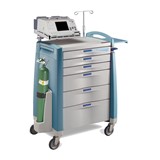











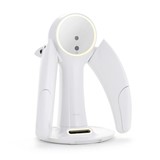
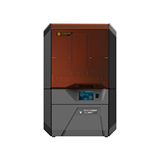

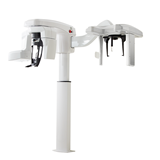
%20(1)-160x160-state_article-rel-cat.png)
